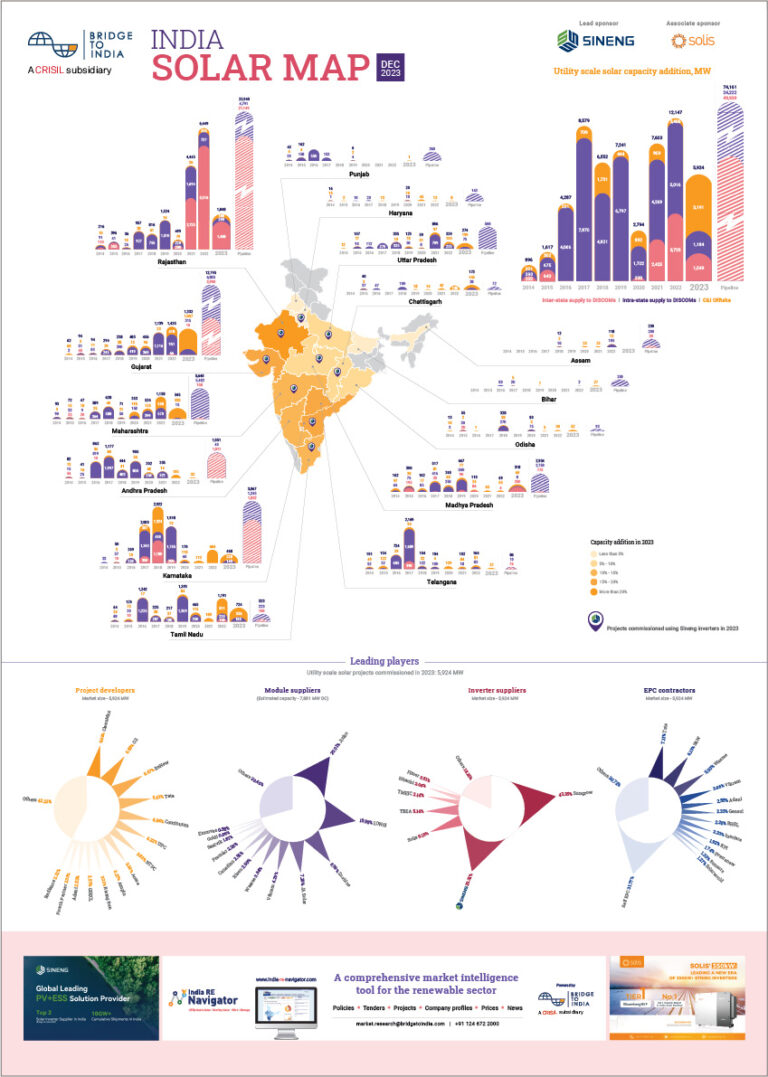We believe that India could easily add 100 GW of solar power in the next ten years.[1] Such a capacity addition would likely be divided into different segments: small rooftop (solar bees), large rooftop (solar pigeons), utility scale projects (solar horses) and ultra-mega scale projects (solar elephants). Each segment has implementation challenges. We believe that solar horses would face least hurdles because of the existing execution experience and manageable size. Solar bees will face most hurdles because their implementation at scale requires the development of a new market place. For further details, please refer to our ‘India Solar Decision Brief’ titled “India’s Solar Transformation: Beehives vs Elephants” (online downloadable version available here).
- Solar horses have relatively fewer challenges due to a good track record and existing industry ecosystem
- Solar bees have most challenges; the largest hurdle is financing
- For very large solar plants, grid infrastructure will be the key challenge
The implementation challenges vary across the four scenarios. Solar horses and solar pigeons are relatively easy to implement as compared to solar bees and solar elephants.
Figure 1: Comparison of implementation challenges across the four scenarios

The challenges in solar project implementation can be broken down into four broad categories – financing, space availability, industry ecosystem and infrastructure.
Financing challenges are a common thread across all four scenarios. To a large extent, these challenges pertain to commercial banks playing a more active role and providing more easy access to loans. The process of obtaining financing, particularly for small rooftop systems needs to become as hassle free as car or personal loans. With the central government targeting 15 GW by 2019, non-recourse financing needs to be made more widely available.
Land/space is an issue at both ends of the spectrum. On residential rooftops, space is limited, especially in densely populated cities (just think of apartment buildings). The sheer amount of land needed for an ultra-mega scale plant makes the process of acquiring it challenging, as it will likely involve multiple sellers and can encourage local land speculation. Delays in land acquisition often result in cost overruns, capable of single handedly derailing a project. In the middle – in the large rooftop and utility scale scenario – land/ space is comparatively less difficult to come by.
Currently, the Indian solar landscape already has a healthy ecosystem in place for utility scale projects. However, the space for small rooftop and large rooftop systems is fragmented and disorganized. For these kinds of projects to really take off, the market needs to become more organized with standardized, ready for installation solutions (for the large rooftop market) or “kits” (for the small rooftop market). In the case of ultra-mega scale projects, the ecosystem for solar will be developed quickly, based on the ecosystem of other large-scale infrastructure projects.
Grid integration challenges will play a critical role once solar become more prominent in India’s energy mix. Challenges such as energy balancing, demand forecasting and weather forecasting are common to all four scenarios. Detailed forecasting and connectivity standards are fairly easy and inexpensive to implement. They are also required early on. For ultra-mega scale projects, with increasing renewable penetration levels, more costly and complex changes are required in the ‘hardware’ of the energy system. They include new infrastructure projects around transmission and balancing power generation. In the first three scenarios balancing is not as serious a concern as the projects would be spread out all over India, across states and there will be some degree of geographical balancing. However, in the fourth scenario local energy balancing is probably required early on.
Mudit Jain is a Consultant at BRIDGE TO INDIA
[1] Refer to our blog, “Realizable solar potential in India is 110 GW to 144 GW by 2024”, http://bit.ly/1zD0znN












